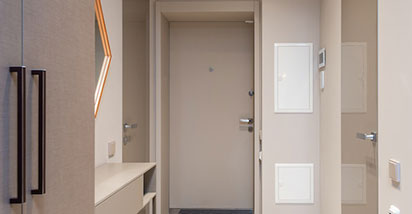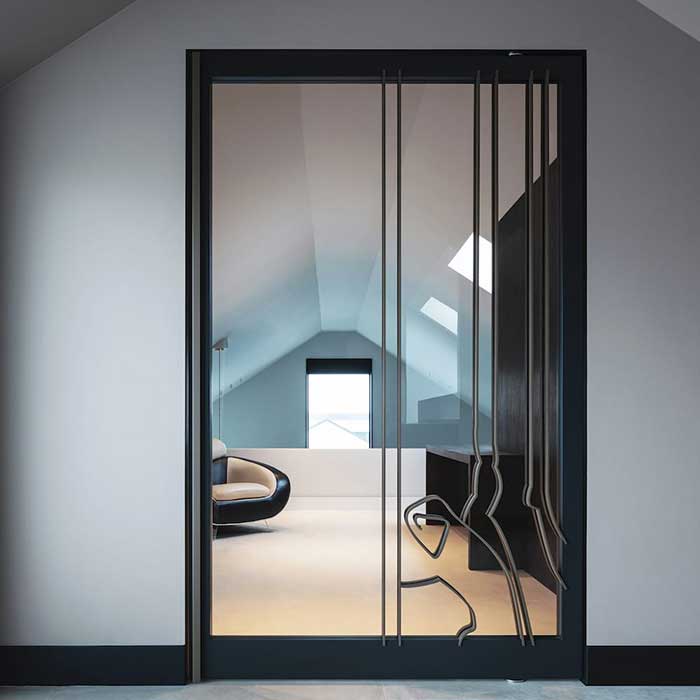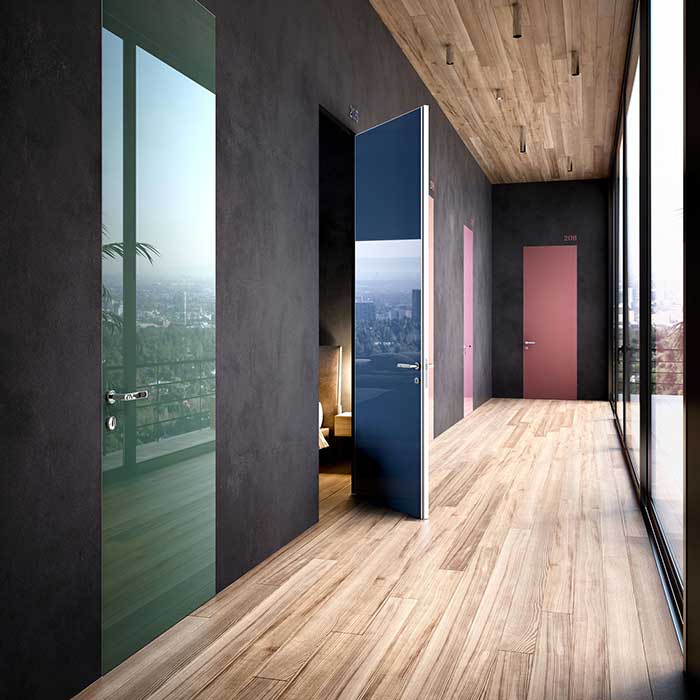Naming the Parts of a Door
Ever wondered what makes your door more than just a plank of wood or a slab of metal that swings open and shut? Well, you’re in luck!
Knowing the structure of your door is like knowing the ingredients in a recipe; it helps you pick the perfect door handle that not only looks good but also functions perfectly for your door. For instance, if you have a solid, heavy door, you’ll need a handle, hinges and latches that are sturdy enough to manage the weight. On the flip side, if your door is more on the delicate side, like an interior bedroom door, a lighter handle might be a better fit.
When you know the right words to use when asking your interior designer, architect or builder about doors and door hardware, you’ll all understand exactly what you’re talking about. Saving you a whole lot of time and potential headaches down the line.
So let’s get started … diving deep into the fascinating world of door structure.
Speak the same door language as your architect, builder and interior designer

The Core Components
The Door Slab
Let’s start with the door slab. This is the main part that you probably think of when you hear the word “door.” It is the flat, rectangular piece that fills the door frame and can be made from various materials like wood, fibreglass, or steel. It’s the canvas on which all other door parts are displayed!
The Frame
The door frame is like the door’s personal stage. It consists of two vertical pieces called “jambs” and a horizontal piece at the top known as the “head.” The frame is what holds the door in place and gives it structure. Think of it as the skeleton of the door setup.
The Jamb
A door jamb is the part of the frame that runs vertically up the side of the door.
The Sill
The sill of a door is at the bottom of the frame and sits flat against the floor.
The Threshold
The threshold is the flat surface you step over when you enter a room. It’s usually made of wood or metal and helps to seal the door when it’s closed. It’s like the welcome mat of the door structure, inviting you in while keeping out drafts.
The Door Hardware
Hinges and Pivots
Hinges and pivots are the unsung heroes of the door world. They allow your door to swing open and closed. Most doors have at least two or three hinges, or use a pivot system. They’re usually made of metal for durability and engineered within an inch of their life!
Explore the our range of hinges and door pivot systems.
Door Knob or Handle
This is the part you grasp to open or close a door. Door knobs are round, while handles are usually lever-shaped. They come in a huge variety of styles and finishes, a quick browse through our website and you’ll see an incredible selection of door knobs and handles!
Bellevue Architectural has an extensive range of designer door handles and door knobs.
Lockset
Safety first! The lockset is the locking mechanism that works with the door knob or handle. It includes the handles, locks, latches, strike plates and any other hardware needed to make a door lockable.
Deadbolt
A deadbolt provides extra security and is operated separately to a lockset (often with a separate key). The deadbolt is usually a shaft that extends from the die of the door panel into the door frame.
Latch
A door latch is part of a lockset and extends from the side of the door panel into the door frame. A latch retracts when a handle is turned, allowing the door panel to open.
Discover the perfect locks and latches for your next project.
Mortise Plate
A mortise plate is located across from the latch or deadbolt on the jamb of a door, and is what the latch or deadbolt enters when a door is closed.
Strike Plate
A strike plate is a metal plate that is attached to sit flush with the door on the jamb. It surrounds the hole for the bolt of a latch or deadbolt.
Escutcheon
Escutcheons are also known as keyhole covers and are ornamental plates that can be found surrounding keyholes, door handles, drawer pulls and lock cylinders. Sometimes call a door rosette (rose plate) they often fitted in pairs on both sides of a door. They’re used to protect the surface of the door panels from nicks and scratches, as well as hide screws.
Bellevue Architectural is the Australian supplier of Olivari escutcheons.
The Decorative Bits
Panels
Some doors have panels, which are decorative insets that add a touch of elegance. They can be raised or recessed and are often found on wooden doors.
Lite
No, it’s not a misspelling of “light.” A lite is a pane of glass in a door. Lites can be clear, frosted, or stained and add both style and natural light to a space.
Transom and Sidelites
These are the optional extras in the door world. A transom is a narrow window that sits above the door, while sidelites are narrow windows that sit on either side. They’re like the cherry on top of a well-designed door.
The Sealing Elements
Weatherstripping
This is the flexible material that helps seal gaps between the door and the frame. It keeps out drafts, rain, and even bugs along the threshold. It’s like a cozy scarf for your door!
Door Sweep
This is a strip of material attached to the bottom of the door that lies flat against the threshold to prevent drafts and keep out small critters. Think of it as the door’s own personal bouncer.
Now you know. Your door is not just a simple, swinging plank; it’s a complex structure with various parts that serve different functions that make an impression and serve a purpose.
Next time you walk through a door, take a longer look at the door hardware to see how it elevates that slab of metal or sheet of glass. From the shape, feel and colour – door hardware is making an impression before you even enter.



